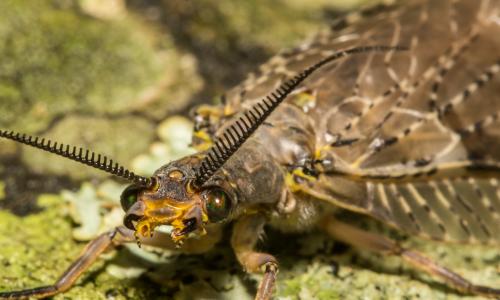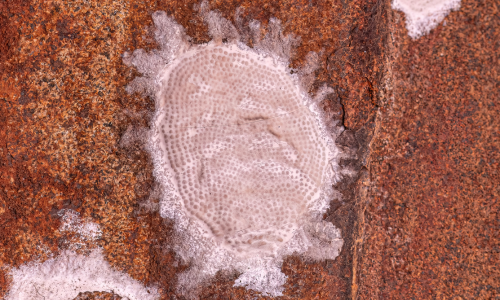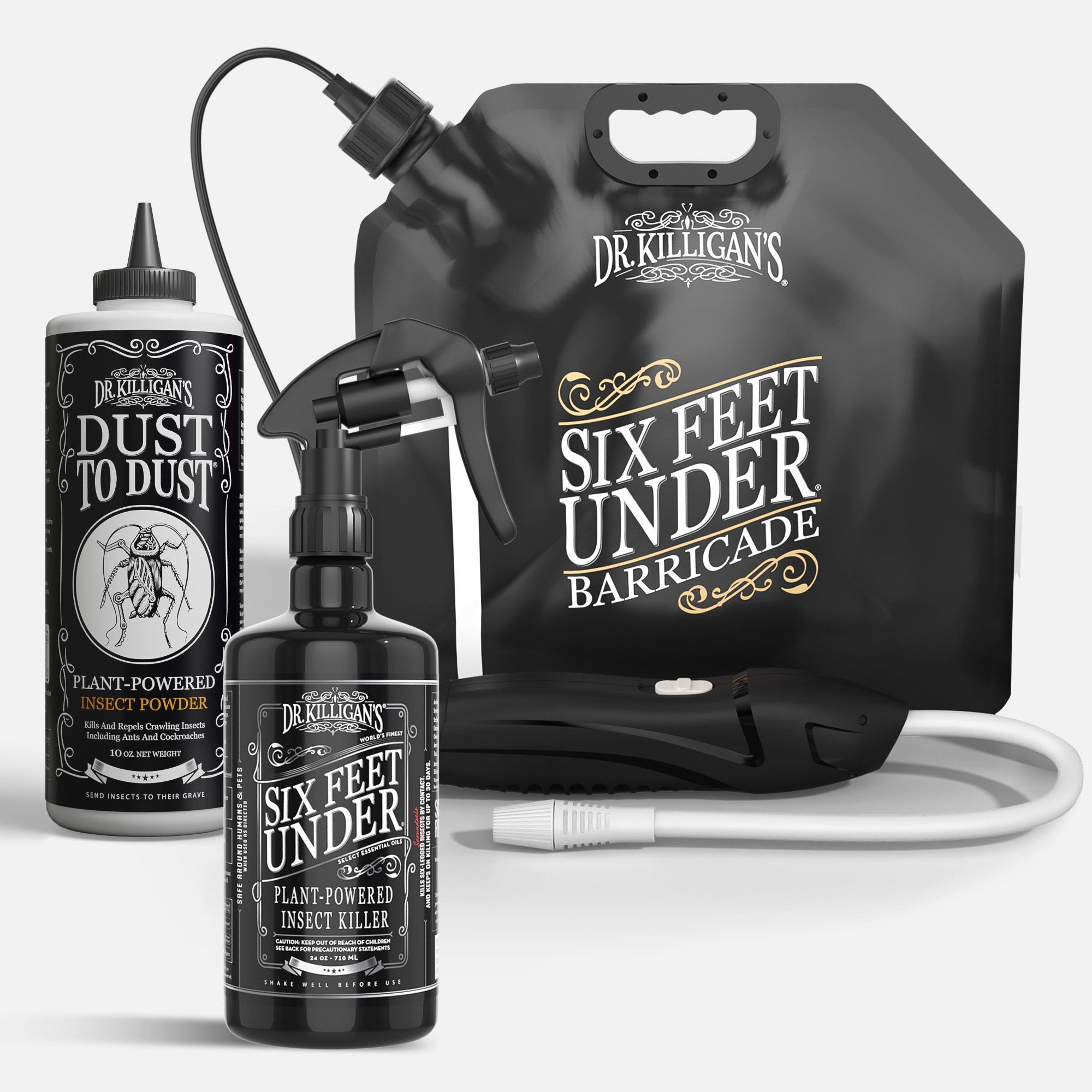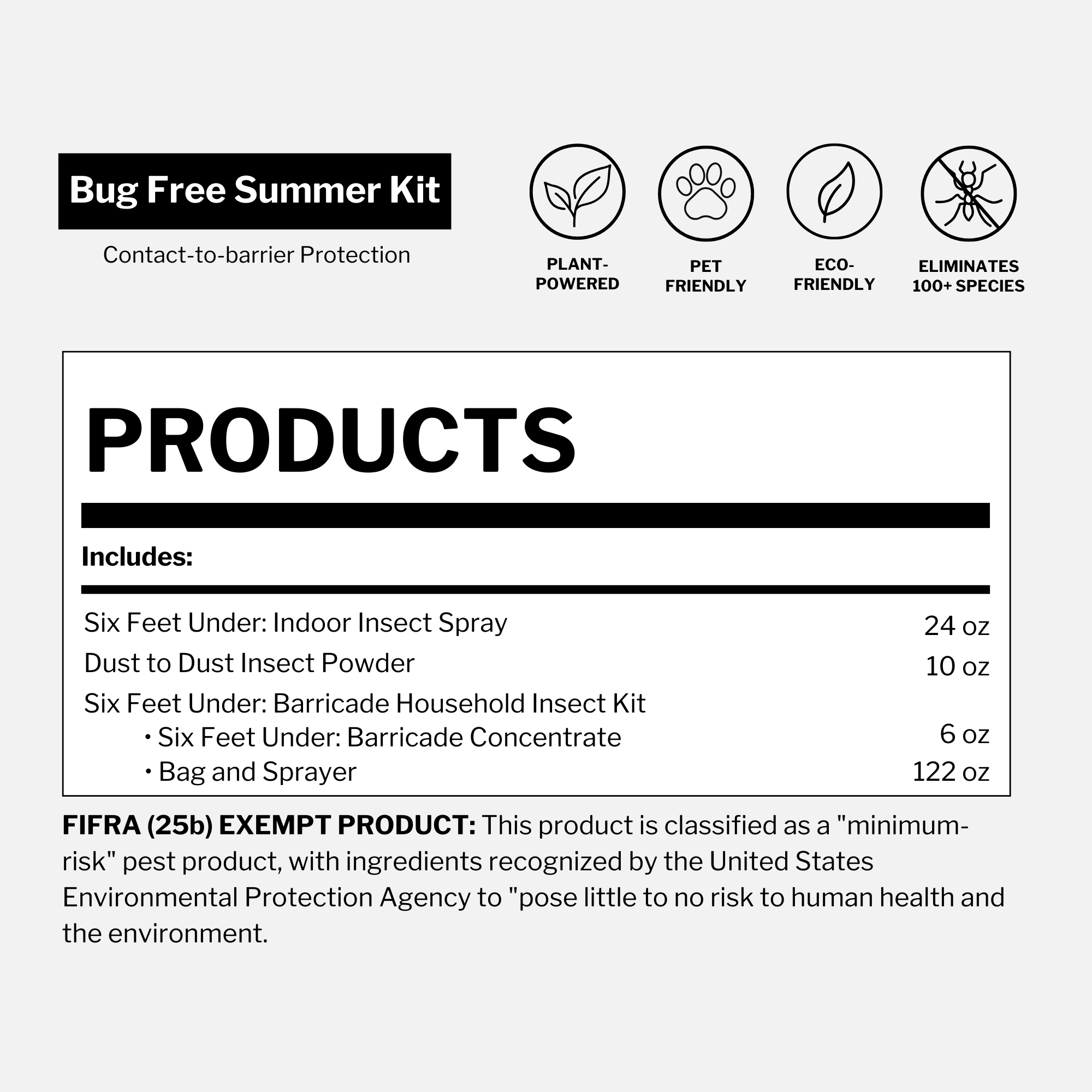Imagine this: You're sitting on your porch, enjoying the quiet tranquility of the evening. Then, suddenly, a huge dark bug (with quite an impressive wing size and extremely long antennae) lands on the arm of your chair. Naturally, two urgent questions pop into your mind: What is it? And more importantly, will it hurt me? Understanding the nature of the bugs we encounter can significantly calm our fears. So, let's take a closer look at one such intriguing insect—the dobsonfly—and demystify it together.
Understanding dobsonflies
Encountering a dobsonfly can be a surprising experience. You’d surely wonder if this creature is a friend or foe. Dobsonflies are fascinating insects with a wingspan of about 5 inches, often found around streams and rivers. The males, with their long, sickle-shaped mandibles (up to 40mm or 1.5 inches in length), might seem formidable.
Interestingly, the most distinctive feature of male dobsonflies, their long mandibles, plays a crucial role in their survival and reproductive strategies, rather than being a threat to humans.
For interest sake, here's a closer look at the multifaceted role of the mandibles in a male dobsonfly's life. They serve several non-aggressive functions:

Dobsonfly mandibles display
- Intimidation and display: When faced with a threat, a male dobsonfly might open its mandibles wide in a threatening display, exploiting the mandibles' size and appearance to appear more formidable to predators and rivals. This visual deterrent often discourages engagement from would-be attackers, thus preventing conflicts without the need for physical confrontation.
- Non-lethal combat: In disputes over territory or during mating rituals, these mandibles are used in rituals of strength and endurance (rather than to inflict harm). Male dobsonflies may engage in wrestling matches, using their mandibles to grapple with each other to demonstrate strength. These encounters are more about display than injury, allowing the dobsonflies to resolve conflicts without causing significant harm to one another.
- Role in mating: The mandibles are used to gently hold onto the female, ensuring stability during copulation. This delicate balance between intimidation and careful handling during mating underscores the mandibles' multifaceted purpose in the dobsonfly's life cycle.
So, do dobsonflies bite?

Dobsonfly's eggs
A common question we encounter is whether dobsonflies bite, given their impressive mandibles and mysterious nature.
Let me put your mind at ease.
Yes, dobsonflies can bite, but it's highly unlikely they will. These creatures are generally peaceful and would much rather keep to themselves than engage with humans. While the larvae (known as hellgrammites) and adult females have robust mandibles capable of delivering a pinch if mishandled, it's important to note that male dobsonflies do not use these to bite humans, as their mandibles are not designed for biting.
Female dobsonflies might pinch if directly threatened, but such instances are rare. Any defensive behavior is typically a last resort rather than an inherent aggressiveness.
The dobsonfly's place in nature
As you encounter this remarkable visitor, reflect on the dobsonfly's vital contributions to the ecosystem.
- In their larval stage, (dubbed hellgrammites), they act as crucial predators, keeping populations of other small aquatic organisms like blackfly and mayfly larvae in check, which ensures the health of aquatic plant life and fosters a balanced ecosystem.
- Upon reaching adulthood, dobsonflies serve as a key link in the food chain, attracting predators such as birds and bats to rivers and streams, thus enriching the biodiversity of these habitats.
Marveling at the dobsonfly's life cycle
The journey of a dobsonfly from egg to adult is a fascinating spectacle of nature's intricacy. Let's take a moment to marvel at some highlights:

- Eggs hatching at night: In the cover of darkness, dobsonfly eggs hatch, beginning the next generation's adventure into the world.
- Hellgrammites: The larval stage, known for their formidable appearance, are up to 3 inches in length. These aquatic hunters are a favorite among fishermen as bait.
- Breath of life: Capable of breathing both in water and on land, hellgrammites showcase remarkable adaptability during their growth.
- Transformation: The transition from larva to the majestic adult dobsonfly involves a fascinating metamorphosis, including the development of iconic mandibles in males.
- A fleeting existence: Adult dobsonflies embrace a brief but purposeful life, dedicated to mating and continuing the cycle of life.
This snapshot of their lifecycle highlights the dobsonfly's remarkable journey and emphasizes the beauty and complexity of our natural world. Isn't nature astonishing?
How to handle dobsonflies safely
If you find a dobsonfly making an extended visit and you'd like to relocate it, there are safe and stress-free methods to consider:
- Gently coaxing the dobsonfly onto a sheet of paper or into a container is an effective way to move it outside without direct contact.
- For those who are particularly cautious, wearing gloves can provide an extra layer of protection and peace of mind.
These techniques allow for a respectful interaction that minimizes stress for both you and the dobsonfly, ensuring a peaceful resolution to the encounter.
Guardians of the stream: Dobsonflies as eco-detectives
Dobsonflies—more than just fascinating insects, they're crucial indicators of water quality. Their larvae, known as hellgrammites, thrive only in clean, oxygen-rich streams, making their presence a sign of environmental health. Highly sensitive to pollution, hellgrammites vanish from compromised waters, serving as a natural alarm for ecological distress.
Living among river rocks, they demand pristine conditions to survive, feeding on small insects in well-oxygenated waters. Though not as sensitive as some aquatic insects, (like stoneflies and mayflies), their requirement for unpolluted water underscores the need for conservation efforts.
Seeing a dobsonfly or its larva isn't just a brush with nature; it's a reminder of our role in protecting our waterways. These "eco-detectives" challenge us to maintain the sanctity of our rivers and streams, ensuring a healthy ecosystem for all life forms. Let's heed their silent call for clean water, preserving the guardians of our streams for future generations.
In conclusion: Navigating our world with respect and understanding
Reflecting on the intriguing world of dobsonflies—whether through a serene evening encounter on your porch or a curious observation near a bubbling stream—highlights the remarkable complexity of life that envelops us. Such moments, however fleeting, beckon us to pause, observe and revel in the interconnectedness that defines our natural world.

Dr. Killigans plant-powered pest control
At Dr. Killigan's, our dedication transcends the realm of effective, environmentally conscious pest management; we're on a mission to cultivate a profound respect and understanding of the natural world, urging a harmonious coexistence with all its denizens, including the often misunderstood dobsonfly.
Let this guide serve not only as an answer to the question, "Do dobsonflies bite?" but also as a call to embrace the diversity of life with curiosity and empathy. We warmly invite you to our website, a space where insight into protecting your home from pests aligns with the ethos of nurturing nature's fragile balance. Discover strategies and insights that not only safeguard your living space but also champion the wellbeing of the planet's myriad life forms.
Embark on a journey with us to not merely secure a pest-free home but to contribute to a vision of the world where each creature, regardless of size or stature, is valued for its intrinsic role and afforded the respect it deserves. Dive into Dr. Killigan's blogs to uncover our holistic approach to pest management and discover how, together, we can foster a healthier, more sustainable planet for generations to come.





















